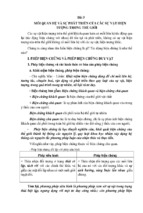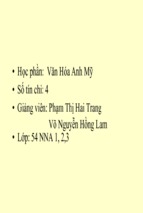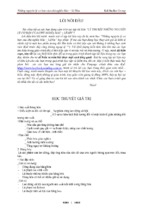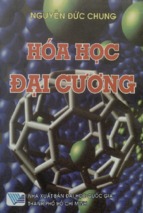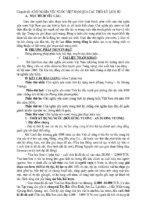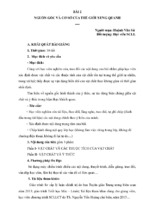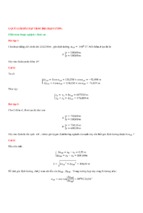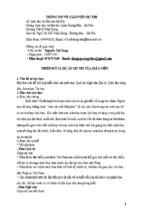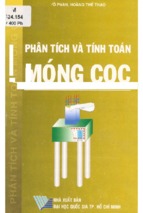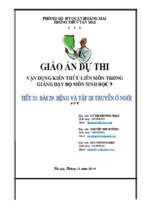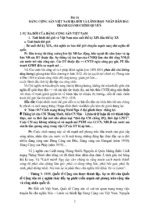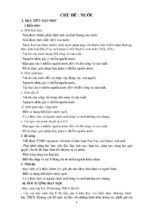d from ascelibrary.org by RMIT UNIVERSITY LIBRARY on 01/03/19. Copyright ASCE. For personal use only; all right
Airfield and Highway
Pavements 2017
Testing and
Characterization of
Bound and Unbound
Pavement Materials
Selected Papers from the Proceedings of the
International Conference on Highway Pavements
and Airfield Technology 2017
Edited by
Imad L. Al-Qadi, Ph.D., P.E.
Hasan Ozer, Ph.D.
Eileen M. Vélez-Vega, P.E.
Scott Murrell, P.E.
Downloaded from ascelibrary.org by RMIT UNIVERSITY LIBRARY on 01/03/19. Copyright ASCE. For personal use only; all rights reserved.
AIRFIELD AND HIGHWAY
PAVEMENTS 2017
TESTING AND CHARACTERIZATION OF BOUND
AND UNBOUND PAVEMENT MATERIALS
PROCEEDINGS OF THE INTERNATIONAL CONFERENCE ON
HIGHWAY PAVEMENTS AND AIRFIELD TECHNOLOGY 2017
August 27–30, 2017
Philadelphia, Pennsylvania
SPONSORED BY
The Transportation & Development Institute
of the American Society of Civil Engineers
EDITED BY
Imad L. Al-Qadi, Ph.D., P.E.
Hasan Ozer, Ph.D.
Eileen M. Vélez-Vega, P.E.
Scott Murrell, P.E.
Published by the American Society of Civil Engineers
Downloaded from ascelibrary.org by RMIT UNIVERSITY LIBRARY on 01/03/19. Copyright ASCE. For personal use only; all rights reserved.
Published by American Society of Civil Engineers
1801 Alexander Bell Drive
Reston, Virginia, 20191-4382
www.asce.org/publications | ascelibrary.org
Any statements expressed in these materials are those of the individual authors and do not
necessarily represent the views of ASCE, which takes no responsibility for any statement
made herein. No reference made in this publication to any specific method, product, process,
or service constitutes or implies an endorsement, recommendation, or warranty thereof by
ASCE. The materials are for general information only and do not represent a standard of
ASCE, nor are they intended as a reference in purchase specifications, contracts, regulations,
statutes, or any other legal document. ASCE makes no representation or warranty of any
kind, whether express or implied, concerning the accuracy, completeness, suitability, or
utility of any information, apparatus, product, or process discussed in this publication, and
assumes no liability therefor. The information contained in these materials should not be used
without first securing competent advice with respect to its suitability for any general or
specific application. Anyone utilizing such information assumes all liability arising from such
use, including but not limited to infringement of any patent or patents.
ASCE and American Society of Civil Engineers—Registered in U.S. Patent and Trademark
Office.
Photocopies and permissions. Permission to photocopy or reproduce material from ASCE
publications can be requested by sending an e-mail to
[email protected] or by locating a
title in ASCE's Civil Engineering Database (http://cedb.asce.org) or ASCE Library
(http://ascelibrary.org) and using the “Permissions” link.
Errata: Errata, if any, can be found at https://doi.org/10.1061/9780784480939
Copyright © 2017 by the American Society of Civil Engineers.
All Rights Reserved.
ISBN 978-0-7844-8093-9 (PDF)
Manufactured in the United States of America.
Airfield and Highway Pavements 2017
iii
Downloaded from ascelibrary.org by RMIT UNIVERSITY LIBRARY on 01/03/19. Copyright ASCE. For personal use only; all rights reserved.
Preface
An ever-growing number of highway and airport agencies, companies, organizations, institutes, and
governing bodies are embracing principles of sustainability in managing their activities and
conducting business. Overarching goals emphasize key environmental, social, economic, and safety
factors in the decision-making process for every pavement project. Therefore, the theme of the
conference was chosen as “Sustainable Pavements and Safe Airports.” It is dedicated to the state-ofthe-art and state-of-practice areas durability, cost-effective, and sustainable airfield and highway
pavements. In addition, recent advancements and technologies to ensure safe and efficient airport
operations are included.
This international conference provides a chance to interact and exchange information with worldwide
leaders in the fields of highway and airport pavements, as well as airport safety technologies. This
conference brought together researchers in transportation and airport safety technologies, designers,
project/construction managers, academics, and contractors from around the world to discuss design,
implementation, construction, rehabilitation alternatives, and instrumentation and sensing.
The proceedings of 2017 International Conference on Highway Pavements and Airfield Technology
have been organized in four (4) publications as follows:
Airfield and Highway Pavements 2017: Design, Construction, Evaluation, and
Management of Pavements
This volume includes papers in the areas of mechanistic-empirical design methods and
advanced modeling techniques for design of conventional and permeable pavements,
construction specifications and quality, accelerated pavement testing, pavement condition
evaluation, and network level management of pavements.
Airfield and Highway Pavements 2017: Testing and Characterization of Bound and
Unbound Pavement Materials
This volume includes papers in the areas of laboratory and field characterization of asphalt
binders, asphalt mixtures, base/subgrade materials, and recent advances in concrete pavement
technology. This volume also features papers for the use of recycled materials, in-place
recycling techniques and unbound layer stabilization methods.
Airfield and Highway Pavements 2017: Pavement Innovation and Sustainability
This volume is dedicated to the papers featuring most recent technologies used for structural
health monitoring of highway pavements, intelligent compaction, and innovative
technologies used in the design and construction of highway pavements. The volume also
includes papers in the area of sustainability assessment using life-cycle assessment of
highway and airfield pavements and climate change impacts and preparation for pavement
infrastructure.
© ASCE
Airfield and Highway Pavements 2017
Downloaded from ascelibrary.org by RMIT UNIVERSITY LIBRARY on 01/03/19. Copyright ASCE. For personal use only; all rights reserved.
Airfield and Highway Pavements 2017: Airfield Pavement Technology and Safety
This volume is dedicated to recent advances in the area of airfield pavement design
technology and specifications, modeling of airfield pavements, use of accelerated loading
systems for airfield pavements, and airfield pavement condition evaluation and asset
management.
The papers in these proceedings are the result of peer reviews by a scientific committee of more than
90 international pavement and airport technology experts, with three to five reviewers per paper.
Recent research was presented in the technical podium and poster sessions including the results from
current Federal Aviation Administration (FAA) airport design, specifications, and safety
technologies; design and construction of highway pavements; pavement materials characterization
and modeling; pavement management systems; and innovative technologies and sustainability. The
plenary sessions featured the Francis Turner Lecture by Dr. Robert Lytton and the Carl Monismith
Lecture by Dr. David Anderson. In addition, two technical tours were offered: Philadelphia
International Airport and the Center for Research and Education in Advanced Transportation
Engineering Systems (CREATEs) Lab of the Henry M. Rowan College of Engineering at Rowan
University.
Three workshops were presented prior to the conference: hands-on FAA’s FAARFIELD software,
design and construction of permeable pavements, and environmental product declarations.
The editors would like to thank the members of the scientific committee who volunteered their time
to review the submitted papers and offered constructive critiques to the authors. We are also grateful
for the work of the steering committee members in planning and organizing the conference: Katie
Chou, Jeffrey Gagnon, John Harvey, Brian McKeehan, Shiraz Tayabji, and Geoffrey Rowe; as well
as the local organizing committee chaired by Geoffrey Rowe and members including James A.
McKelvey, Timothy Ward, Ahmed Faheem, and Yusuf Mehta for their help with the technical tours.
Finally, we would like to especially thank the ASCE T&DI staff who helped put the conference
together: Muhammad Amer, Mark Gable, Drew Caracciolo, and Deborah Denney.
Imad L. Al-Qadi, Ph.D., P.E., Dist. M.ASCE, University of Illinois at Urbana-Champaign
Hasan Ozer, Ph.D., M.ASCE, University of Illinois at Urbana-Champaign
Eileen M. Vélez-Vega, P.E., M.ASCE, Kimley-Horn Puerto Rico, LLC
Scott D. Murrell, P.E., M.ASCE, Applied Research Associates
© ASCE
iv
Airfield and Highway Pavements 2017
v
Contents
Downloaded from ascelibrary.org by RMIT UNIVERSITY LIBRARY on 01/03/19. Copyright ASCE. For personal use only; all rights reserved.
Asphalt Mixture Characterization
Establishing Design Limits for Cracking Properties of Asphalt Concrete
with Overlay Tester .................................................................................................... 1
Victor M. Garcia, Jose Garibay, Imad Abdallah, and Soheil Nazarian
Development of the Duplicate Shear Test for Asphalt Mixtures ......................... 13
Mohammadreza Khajeh Hosseini, Stefan A. Romanoschi, Reza Saeedzadeh,
and Nickey Akbarieh
Development of Asphalt Concrete Dogbone Shape Specimens for Uniaxial
Tension Testing ......................................................................................................... 25
A. R. Archilla and J. Corrales-Azofeifa
Monitoring the Deformation of Asphalt Concrete under Repeated
Tensile and Shear Stresses through Micro Cracks Healing Cycles ..................... 38
S. I. Sarsam and H. K. Husain
Effect of Asphalt Rejuvenating Agent on Rutting Properties of Aged
Reclaimed Asphalt Pavement .................................................................................. 50
Nassim Sabhafer and M. Hossain
Laboratory Performance of Superpave Mixes for Perpetual Pavements ........... 63
B. A. Priyanka, Goutham Sarang, B. M. Lekha, and A. U. Ravi Shankar
Influence of Coal Combustion By-Products Physiochemical Properties on
Aging Related Performance of Asphalt Mastics and HMA .................................. 73
Emil Bautista, Ahmed Faheem, Clayton Cloutier, and Konstantin Sobolev
Characterization of Recycled Materials in Asphalt Mixtures
Effect of RAP on Cracking and Rutting Resistance of HMA Mixes ................... 86
R. Saha, B. Karki, A. Berg, R. S. Melaku, and D. S. Gedafa
Rutting Susceptibility of Asphalt Mixes with High RAP Content Using
Rheological and Performance-Based Test Methods .............................................. 95
Syed Ashik Ali, Rouzbeh Ghabchi, Shivani Rani, Musharraf Zaman,
and Craig Parker
© ASCE
Airfield and Highway Pavements 2017
vi
Assessment of Emulsified RAP Cold Mixes via Non-Destructive Testing......... 107
Ilker Boz, Xuan Chen, and Mansour Solaimanian
Downloaded from ascelibrary.org by RMIT UNIVERSITY LIBRARY on 01/03/19. Copyright ASCE. For personal use only; all rights reserved.
Effects of RAP Sources for Performance Testing of Asphalt Concrete ............ 119
Hasan M. Faisal, Umme A. Mannan, A. S. M. Asifur Rahman,
Md. Mehedi Hasan, and Rafiqul A. Tarefder
Constitutive Modeling and Characterization for Asphalt Mixtures
Direct Characterization of Aging Diffusion in Asphalt Mixtures Using
Micro-Indentation and Relaxation (MIR) ............................................................ 129
M. Alsalihi, A. Hosseini, and A. Faheem
A Laboratory Evaluation of Aging on the Viscoelastic Material
Functions of Asphalt Concrete and Its Binder..................................................... 141
A. S. M. Asifur Rahman, Hasan M. Faisal, and Rafiqul A. Tarefder
Application of Ultrasonic Pulse Velocity Testing of Asphalt Concrete
Mixtures to Improve the Prediction Accuracy of Dynamic Modulus
Master Curve .......................................................................................................... 152
Pezhouhan Tavassoti-Kheiry, Ilker Boz, Xuan Chen, and Mansour Solaimanian
Measured versus Interconverted Viscoelastic Material Functions of
Asphalt Concrete .................................................................................................... 165
A. S. M. Asifur Rahman, Hasan M. Faisal, and Rafiqul A. Tarefder
Asphalt Binder Characterization
Asphalt Binder Properties and Airfield Pavement Cracking ............................. 176
Geoffrey Rowe
Performance Grade and Moisture-Induced Damage Potential of
Chemically-Modified Asphalt Binders and Mixes ............................................... 189
S. Rani, R. Ghabchi, S. A. Ali, M. Zaman, and E. A. O’Rear
Effect of Asphalt Rejuvenating Agent on Cracking Properties of Aged
Reclaimed Asphalt Pavement ................................................................................ 201
Nassim Sabhafer and M. Hossain
Binder Rheology Based Dynamic Modulus and Phase Angle Predictive
Models for Asphalt Concrete ................................................................................. 215
A. S. M. Asifur Rahman, Umme A. Mannan, and Rafiqul A. Tarefder
Influence of Viscosities of PDA Pitch and Flux on Blended Bitumen
Viscosity ................................................................................................................... 225
Uma Chakkoth, Parag Ravindran, and J. Murali Krishnan
© ASCE
Airfield and Highway Pavements 2017
vii
Merits of Polymer Types Used with Different Local Bitumen
Produced in Kurdistan, Iraq ................................................................................. 236
Faris Jasim, Agreen Azeez, and Mohammed Adam Mohammed
Downloaded from ascelibrary.org by RMIT UNIVERSITY LIBRARY on 01/03/19. Copyright ASCE. For personal use only; all rights reserved.
Creep Stiffness Master Curve of Recycled Asphalt Pavement (RAP)
Modified Asphalt Binders Based on Binder Beam Rheometer (BBR)
Test Data .................................................................................................................. 246
Umme Amina Mannan, Hasan M. Faisal, and Rafiqul A. Tarefder
A Synthesis of Asphalt Foaming Parameters and Their Association in
Foamed Binder and Mixture Characteristics ...................................................... 256
Biswajit K. Bairgi and Rafiqul A. Tarefder
Concrete Pavement Technology
Quality Management for Rubber Tire Concrete Applications in
Highway and Airfield Pavements Construction .................................................. 268
Hossein Ataei and Chinmay Mattuga Narahari
Experimental Analysis of Interface Shear Fatigue Performance of
Ultra-Thin Whitetopping ....................................................................................... 283
K. Jayakesh and S. N. Suresha
Probability Analysis of Flexural Fatigue Data of High Volume Fly Ash
Concrete ................................................................................................................... 295
Aravindkumar Harwalkar and S. S. Awanti
Comparing Methods for Determining In Situ Asphalt Stiffness Using
Pavement ME .......................................................................................................... 308
N. D. Bech, J. M. Vandenbossche, A. Mateos, and J. T. Harvey
Unbound Material Characterization for Base/Subbase Applications
Analysis of Cyclic Behavior of Geomaterials Using Dissipated Energy
Concept .................................................................................................................... 322
U. B. Arteaga and R. S. Ashtiani
Field Performance Evaluation of Pavement Construction Platforms
Utilizing Unconventional Large Size Aggregates Packed with Quarry
Byproducts, and Higher Fines Aggregate Subgrade Layers .............................. 334
Issam Qamhia, Erol Tutumluer, Hasan Ozer, and Hasan Kazmee
A System for Real-Time Measurement of Moisture in Aggregate Mixes
Moving on a Conveyor Belt ................................................................................... 348
Linus Dep, Cheng Thao, and Finch Troxler
© ASCE
Airfield and Highway Pavements 2017
viii
A Study on Use of Locally Available Moorum in Pavement
Base and Sub-Base .................................................................................................. 360
Shubhakanta Barik, Mahabir Panda, and Prasanta Kumar Bhuyan
Downloaded from ascelibrary.org by RMIT UNIVERSITY LIBRARY on 01/03/19. Copyright ASCE. For personal use only; all rights reserved.
Characterization of Airfield Subbase Materials Using Precision Unbound
Material Analyzer (PUMA) ................................................................................... 370
Qiang Li, Jeffery Stein, and Navneet Garg
Aggregate Base and Subgrade Stabilization
Critical Pavement Response Analysis of Pond Ash Stabilized Subgrade
Using Non-Linear Approach ................................................................................. 382
Gaurav Gupta, Hemant Sood, and Pardeep Kumar Gupta
In-Place Stabilization for the Rehabilitation of Taxiway S at
Nashville International Airport ............................................................................. 396
M. O. Bejarano and D. Schilling
Performance Evaluation of a Polymer Binder Stabilized Aggregate
Mixture: A Pilot Study ........................................................................................... 406
Elie Y. Hajj, Murugaiyah Piratheepan, and Peter E. Sebaaly
Geogrid/Geotextile Stabilization
Numerical Analysis of Flexible Pavement Reinforced with Geogrids ............... 416
G. Leonardi, R. Palamara, and L. S. Calvarano
Experimental Evaluation of the Interaction between Geosynthetic
Reinforcements and Hot Mix Asphalt .................................................................. 428
G. H. Roodi, A. M. Morsy, and J. G. Zornberg
© ASCE
Airfield and Highway Pavements 2017
Establishing Design Limits for Cracking Properties of Asphalt Concrete with
Overlay Tester
Victor M. Garcia1; Jose Garibay2; Imad Abdallah, Ph.D3; and Soheil Nazarian, Ph.D., P.E.4
Downloaded from ascelibrary.org by RMIT UNIVERSITY LIBRARY on 01/03/19. Copyright ASCE. For personal use only; all rights reserved.
1
Research Assistant, Center for Transportation Infrastructure Systems (CTIS), Univ. of Texas at
El Paso, 500 W. University Ave., Metallurgy Bldg., Room M-101A, El Paso, TX, 79968. E-mail:
[email protected]
2
Lab Manager, Center for Transportation Infrastructure Systems (CTIS), Univ. of Texas at El
Paso, 500 W. University Ave., Metallurgy Bldg., Room M-105, El Paso, TX, 79968. E-mail:
[email protected]
3
Executive Director, Center for Transportation Infrastructure Systems (CTIS), Univ. of Texas at
El Paso, 500 W. University Ave., Metallurgy Bldg., Room M-105, El Paso, TX, 79968. E-mail:
[email protected]
4
Professor, Center for Transportation Infrastructure Systems (CTIS), Univ. of Texas at El Paso,
500 W. University Ave., Engineering Bldg., Room A-207, El Paso, TX, 79968 E-mail:
[email protected]
Abstract
The premature cracking of the asphalt concrete (AC) layer in flexible pavements highlights the
importance of a simple cracking performance test that can be used for routine applications during
the design process of AC mixes. The overlay tester (OT) can be used to evaluate the formation
and propagation of a crack within the AC specimens. This paper explains an alternative
methodology for assessing the cracking potential of AC mixes using the OT test. The proposed
methodology consists of two main stages: crack initiation and propagation. The fracture
properties of the AC specimens are estimated from the critical fracture energy computed from
the first OT loading cycle. The resistance of the AC mix to crack propagation is estimated from
the crack progression rate, the rate of reduction in load carrying capacity of the AC specimen
with the number of cycles. The process of selecting the limits for the critical fracture energy and
crack progression rate to delineate the well and poor performing mixes is discussed here. The
proposed cracking methodology and acceptance limits may provide a more comprehensive
approach to predict and design the cracking potential of AC mixes.
INTRODUCTION
An asphalt concrete (AC) layer must have a balance of rutting and cracking resistance to perform
satisfactorily in the field (Zhou et al., 2006). Laboratory testing is an indispensable first step in
balancing the rutting and cracking potentials of AC mixes and to minimize the premature failure
of the pavements. Over the past decade, the rutting performance of the AC mixes has been
satisfactorily improved by employing the wheel-tracking devices, such as the Hamburg wheeltracking (HWT) test. One way to meet the rutting resistance requirements with the HWT test is
using stiffer binders or lower asphalt contents. These measures may negatively influence the
flexibility and cracking resistance of the AC mixes (Zhou et al., 2006).
Several performance tests have been implemented to evaluate the cracking resistance of
AC mixes in the laboratory setting (Ozer et al., 2016; Kim et al., 2006; Wagoner et al., 2005; Wu
et al., 2005; Roque et al., 2002). One such test, the overlay tester (OT) test, assesses the
reflective cracking susceptibility of AC mixes through an assessment of the number of cycles to
failure using a 93% reduction in load as a failure criterion. Although the OT test seems to
© ASCE
1
Downloaded from ascelibrary.org by RMIT UNIVERSITY LIBRARY on 01/03/19. Copyright ASCE. For personal use only; all rights reserved.
Airfield and Highway Pavements 2017
simulate effectively the reflective cracking damage on AC specimens, the current specified
performance index from this OT test method yields a high variability (Walubita et al. 2012).
Zhou and Scullion (2003) upgraded and standardized the original Texas OT test
procedure and corresponding specifications. They found the OT test results are sensitive to key
components of AC mixes such as the asphalt binder content, air voids and aggregate properties
(Zhou and Scullion, 2005). Zhou et al (2005) proposed a mix design approach that specifies both
the HWT device and OT tests for rutting and cracking evaluation, respectively. Walubita and
Scullion (2008) implemented the OT test to design several AC mixes in Texas. Additionally,
several studies have documented a promising performance of the OT test to qualitatively predict
the cracking resistance of AC mixes (Al-Qadi et al., 2015; Tran et al., 2012; Hajj et al., 2010;
Bennert et al., 2009; and Bennert and Maher, 2008).
A great deal of effort has been focused toward the evaluation and improvement of testing
and analysis methods to estimate the cracking resistance of AC mixes using the OT (Gu et al.,
2015; Walubita et al., 2013; Koohi et al., 2012; Zhou et al., 2007). Garcia et al. (2016) proposed
an alternative approach that consists of two performance indices, the critical fracture energy and
crack progression rate, to assess the cracking response of AC specimens during the crack
initiation and crack propagation stages of the OT test. This study reports the process of selecting
the acceptance limits for the proposed performance indices to delineate the well and poor
performing AC mixes.
The scope of this paper includes a brief description of the proposed OT test method,
followed by an evaluation of the consistency of the performance indices from OT and IDT tests,
a selection of acceptance limits for the critical fracture energy and crack progression rate, and an
assessment of the proposed OT test methodology and acceptance limits. Finally, the paper closes
with conclusions, recommendations and future work from this study.
OVERLAY TESTER (OT): PRESENTATION OF A NEW APPROACH
Traditional OT Test
The Texas Department of Transportation (TxDOT), among several other highway
agencies, currently employs the OT test to determine the reflective cracking resistance of some
of their AC mixes. The TxDOT OT test procedure is outlined in test procedure Tex-248-F, which
is similar to the ASTM WK26816 protocol. Figure 1 depicts the setup of the OT device. The OT
consists of two plates. One plate is fixed, while the other can slide back and forth. A 4 mm
opening gap is set between the two steel plates. The OT specimen is glued on top of the two
platens with half of the length of the specimen resting on each plate. The test is conducted in a
displacement-controlled mode using a cyclic triangular waveform with a repeated loading rate of
one cycle per 10 sec, a constant maximum displacement of 0.025 in. (635 µm) and a test
temperature of 77ºF (25ºC). Optionally, a linear variable differential transducer (LVDT) is added
to the test setup as described by Garcia and Miramontes (2015). The primary output of this OT
test specification is the number of cycles to failure using a 93% reduction on the maximum peak
load.
Figure 2 shows the typical output data obtained from the OT test. The OT system records
the time histories of the actuator displacement, measured load, number of displacement cycles
and test temperature. The applied displacement, measured load and cyclic maximum peak load
of each cycle are plotted on Figure 2a. The maximum peak load against the number of cycles
(a.k.a. load reduction curve) is shown in Figure 2b. Due to the displacement deformation applied
with the sliding plate, the formation of a crack occurs at the bottom of the specimen and then
© ASCE
2
Airfield and Highway Pavements 2017
Downloaded from ascelibrary.org by RMIT UNIVERSITY LIBRARY on 01/03/19. Copyright ASCE. For personal use only; all rights reserved.
propagates thru the height of the specimen. A line representing the 93% load reduction limit for
this example was also added to the graph.
Figure 1. OT schematic layout and specimen setup.
Figure 2. Interpretation of OT results: a) Typical OT data and b) Load reduction curve.
Description of Proposed Methodology and Performance Indices
In the proposed data interpretation approach, the OT test is divided in two stages: a) crack
initiation phase that occurs during the first cycle, and b) crack propagation phase that consists of
the reduction of the load throughout the number of cycles. An ideal crack resistant mix should be
though enough to mitigate the formation of a crack during the crack initiation stage and at the
same time, flexible enough so that it would attenuate the propagation of the crack at a gradual
© ASCE
3
Airfield and Highway Pavements 2017
4
rate after the crack is initiated. As depicted in Figure 3, the critical fracture energy and crack
progression rate were implemented to characterize the crack initiation and crack propagation
stages of the OT test respectively (Garcia et al, 2016).
Downloaded from ascelibrary.org by RMIT UNIVERSITY LIBRARY on 01/03/19. Copyright ASCE. For personal use only; all rights reserved.
The critical fracture energy, Gc, is simply the area under the load-displacement response
curve up to the maximum peak load from the first cycle as illustrated in Figure 3a. Equation 1
can be used to calculate the critical fracture energy.
(1)
where W = portion of the work to induce fracture, A = area of the cracked section, which is
assumed as the specimen thickness multiplied by its width.
The load reduction curve is used to extract the crack progression rate. The load reduction
curve is first normalized by the maximum peak load from the first cycle. A power equation is
then fitted to the normalized load reduction curve as shown in Figure 3b. The power coefficient
(b-coefficient) from the power equation is interpreted as the crack progression rate.
Figure 3. Representation of proposed performance indices: a) Critical fracture energy
(Crack initiation) and b) Crack progression rate (Crack propagation).
RESEARCH METHODOLOGY
AC Material Characteristics
Table 1 summarizes the characteristics of the AC mixes used in this study to meet the
objectives mentioned above. Seven different AC mix types including a thin overlay mix (TOM),
a stone mastic asphalt (SMA), dense-graded and dense-graded Superpave (SP) mixes were
included in the experimental design plan. The perceived field performance as reported by the
local TxDOT engineers (as reported in Table 1) was also considered in the mix selection.
© ASCE
Airfield and Highway Pavements 2017
5
Table 1. Characteristics of AC mixes
Designation
Mix-design Characteristics
TOM
6.5% PG 76-22 + Sandstone/Limestone/Dolomite (NMAS 4.76 mm)
6.3% PG 70-28 + 0.4% AS + 0.3% FC + Sandstone/Limestone/Dolomite/Gravel
(NMAS 9.5 mm)
6.3% PG 64-22 + 30% RAP + 0.5% WMA + Gravel/Limestone/Dolomite (NMAS
9.5 mm)
4.6% PG 64-22 + 20% RAP + 2% WMA + Limestone/Dolomite/Gravel (NMAS
12.7 mm)
5.3% PG 64-22 + 1% AS + 8% RAP + 2% RAS + Limestone/Dolomite (NMAS
9.5 mm)
Downloaded from ascelibrary.org by RMIT UNIVERSITY LIBRARY on 01/03/19. Copyright ASCE. For personal use only; all rights reserved.
SMA-D
SP-C
Type-C
SP-D 1
Perceived
Performance
Very Good
Very Good
Good
Marginal
Poor
Type-D
5.1% PG 64-22 + 15% RAP + 2% RAS + Limestone/Dolomite (NMAS 4.76 mm)
Poor
SP-D 2
5.4% PG 64-22 + 0.4% WMA + 15% RAP + NP (NMAS 9.5 mm)
Poor
PG = performance grade, NMAS= nominal maximum aggregate size, AS = antistripping, FC = fiber content, WMA=
warm mix asphalt additive, CR = crumb rubber, RAP = reclaimed asphalt pavement, RAS = recycled asphalt shingles,
NP=not provided
Test Procedures and Specimen Fabrication
Prior to compaction, the loose AC mixes were heated for two hours at their
corresponding compaction temperatures. A Superpave gyratory compactor was used to compact
standard 6 in. (150 mm) diameter by 4.5 in. (114 mm) thick laboratory specimens to a target
trimmed density of 7±1.0%. The laboratory specimens were cut using a double-blade saw. All
specimens were dried using a CoreDryTM device. The specimens were then tested three days
after molding. Before testing, the specimens were preconditioned for two hours at a temperature
of 77˚F (25˚C). Five replicate specimens were tested for each aspect of the evaluation to account
for the repeatability of the measured parameters.
The OT specimens were nominally 6 in. (150 mm) long, 3 in. (75 mm) wide and 1.5 in.
(38 mm) thick. The specimen preparation process proposed by Garcia et al. (2016) was followed
in this study. The OT tests were conducted using a device manufactured by ShedWorks. The
cycling loading was continued until reaching either a 93% reduction in load or 1000 cycles. The
critical fracture energy and crack progression rate, as well as the traditional number of cycles to
failure were reported from the OT tests.
As supplementary test (see Figure 4), the testing protocol outlined in ASTM D6931-12
was used to perform the indirect tensile (IDT) tests. The nominally 4 in. (100 mm) diameter and
2 in. (50 mm) thick IDT specimens were trimmed from 4 in. (100 mm) diameter by 4 in. (100
mm) thick laboratory specimens. The IDT tests were performed with a material testing system
(MTS) placed inside an environmental controlled chamber. A loading rate of 2 in./min (50
mm/min) was applied to the IDT specimens. The tensile strength was computed using Equation
2.
=
(2)
where σt is the tensile strength and Pmax is the maximum load. Parameters t and D are the
thickness and diameter of the IDT specimen, respectively.
© ASCE
Downloaded from ascelibrary.org by RMIT UNIVERSITY LIBRARY on 01/03/19. Copyright ASCE. For personal use only; all rights reserved.
Airfield and Highway Pavements 2017
6
Figure 4. IDT specimen setup.
DATA ANALYSIS AND DISCUSSION OF RESULTS
Consistency of Measured Performance Parameters for OT and IDT Tests
The consistency of the proposed parameters was evaluated from OT test results obtained
from replicate specimens. The average, standard deviation and coefficient of variation (COV) of
the reported parameters are presented in Table 2. The COVs of the critical fracture energy and
crack progression rate were less or equal to 20% except for the results from Type-D mix for the
crack progression rate. The crack progression rate for Type-D mix presented a higher COV
because the curvature of the load reduction curve was difficult to estimate with a few load
repetitions necessary for the specimens’ failure. The number of cycles to failure presented COVs
that ranged between 27% and 85%. The measured parameters with IDT tests presented COVs of
less than 5%.
Preliminary Acceptance Limit for Crack Progression Rate
To properly establish an acceptance limit for the crack progression rate, the behaviors of
the load reduction curves were investigated. The average normalized load reduction curves for
each mix is presented in Figure 5. Three additional curves representing the 100, 300 and 1000
cycles to reach a 93% load reduction are added to the figure. The load reduction curves for the
TOM and SMA-D mixes are way above the curve associated with the 300 and 1000 cycles
meaning that these two mixes will easily resist more than 1000 cycles. The load reduction curve
for the SP-C follows the ideal curve for 1000 cycles to failure. The load reduction curve for the
Type-C mix is slightly above the ideal curve representing 300 cycles. Conversely, the load
reduction curves for the Type-D and SP-D 2 mixes are significantly below the curve for 300
cycles.
© ASCE
Airfield and Highway Pavements 2017
7
Table 2. Summary of Parameters from OT and IDT Tests
OT
Downloaded from ascelibrary.org by RMIT UNIVERSITY LIBRARY on 01/03/19. Copyright ASCE. For personal use only; all rights reserved.
Mix
Type
TOM
SMA-D
SP-C
Type-C
SP-D 1
Type-D
SP-D 2
Parameter
Average
Std. Dev.
COV
Average
Std. Dev.
COV
Average
Std. Dev.
COV
Average
Std. Dev.
COV
Average
Std. Dev.
COV
Average
Std. Dev.
COV
Average
Std. Dev.
COV
IDT
Critical
Fracture
Energy,
in.-lbs/in.2
Crack
Progression
Rate
Number of
Cycles to
Failure
Max
Load,
lbs
Tensile
Strength,
psi
2.7
0.2
7%
1.7
0.2
9%
1.7
0.1
8%
1.1
0.1
9%
3.5
0.2
5%
3.1
0.3
10%
1.9
0.2
10%
0.33
0.01
3%
0.32
0.01
4%
0.37
0.03
8%
0.45
0.03
6%
0.60
0.04
7%
1.10
0.36
33%
1.31
0.26
20%
1000
0
NA
1000
0
NA
653
326
50%
350
94
27%
73
26
35%
21
18
85%
14
6
40%
2007
73
4%
1108
24
2%
1736
64
4%
1720
48
3%
2641
68
3%
2580
47
2%
1743
62
4%
160
6
4%
88
2
2%
138
5
4%
137
4
3%
210
5
3%
205
4
2%
139
5
4%
Figure 5. Comparison of load reduction curves.
The three representative load reduction curves for 100, 300 and 1000 cycles with the
associated crack progression rate are shown in Figure 6. The corresponding crack progression
© ASCE
Airfield and Highway Pavements 2017
Downloaded from ascelibrary.org by RMIT UNIVERSITY LIBRARY on 01/03/19. Copyright ASCE. For personal use only; all rights reserved.
rates for the curves representing 100, 300 and 1000 cycles to failure are 0.577, 0.466 and 0.385,
respectively. The curve corresponding to 300 cycles can be interpreted as the curve associated to
the current pass/fail criteria. As a preliminary acceptance limit, a crack progression rate of 0.50 is
proposed to delineate the AC mixes with well and poor cracking resistance using the proposed
OT methodology and associated performance indices.
Figure 6. Representative load reduction curves for 100, 300 and 1000 cycles.
Correlation between Fracture and Tensile Properties of AC Mixes
Some of the current TxDOT AC mix design specifications contain limits for the IDT
strength as a surrogate for cracking performance in the field. The maximum and minimum
allowable IDT tensile strengths are 200 psi (~1.4 MPa) and 85 psi (~600 kPa), respectively.
The IDT strengths from the seven mixes are compared with their corresponding critical
fracture energy values from OT in Figure 7. A good correlation is observed between the two
parameters with a coefficient of determination (R2 value) of 0.80. Based on this correlation, the
preliminary upper limit (UL) of three and the lower limit (LL) of unity were selected for the
acceptable critical energy range.
Figure 7. Correlation between IDT and OT tests performance indices.
Characterization of AC Mixes using Proposed OT Methodology
To better interpret the cracking properties of the AC mixes using the proposed
performance indices from the OT test, the design interaction plot presented in Figure 8 is
recommended. The critical fracture energy (crack initiation property) and crack progression rate
(crack propagation property) are plotted against one another. The design interaction plot can be
subjectively divided into the following four categories:
© ASCE
8
Airfield and Highway Pavements 2017
Downloaded from ascelibrary.org by RMIT UNIVERSITY LIBRARY on 01/03/19. Copyright ASCE. For personal use only; all rights reserved.
9
Tough-Crack Resistant: AC mixes with good resistance during crack initiation (tough)
and propagation (flexible). Ideal mixes should be in this quadrant.
Tough-Crack Susceptible: AC mixes with good resistance to crack initiation (tough)
and susceptible to crack propagation (brittle).
Soft-Crack Resistant: AC mixes susceptible to crack initiation (soft) but good resistance
to attenuate the propagation of the crack (flexible)
Soft-Crack Susceptible: AC mixes with poor resistance to crack initiation and
propagation. These mixes should be definitely avoided.
Figure 8. Design interaction plot
The distributions of the critical fracture energy and crack progression rate for all mixes
are presented in Figure 9. According to the proposed methodology, the best mixes are the SMAD and TOM mixes since they are flexible after the crack has initiated (the lowest crack
progression rates). The high critical fracture energy of TOM is desire since more energy will be
required to initiate the crack. The SP-C mix should satisfactorily resist the initiation and
propagation of the crack. The Type-C mix will satisfactorily resist the propagation of the crack,
but the crack will initiate easily due to the low critical fracture energy. Conversely, the critical
fracture energy and crack progression rate for the SP-D 1 mix are out of the acceptable limits.
This mix will require more energy to initiate the crack, but the crack will abruptly propagate due
to its brittleness. Similarly, the results for the Type-D mix are not within the acceptable limits
with a poor crack progression rate and high critical fracture energy. The SP-D2 mix can be
ranked as the worst of the AC mixes with the highest crack progression rate.
Figure 9 - Cracking performance of AC mixes.
© ASCE
Downloaded from ascelibrary.org by RMIT UNIVERSITY LIBRARY on 01/03/19. Copyright ASCE. For personal use only; all rights reserved.
Airfield and Highway Pavements 2017
SUMMARY AND CONCLUSIONS
The main goal of this paper was to present the process of selecting acceptance limits for
the performance indices proposed on a new data interpretation method for the OT tests. The
proposed data interpretation method, performance indices and corresponding acceptance limits
were used to determine the cracking resistance of several AC mixes commonly use in Texas. The
cracking resistance of the AC mixes can be ranked more consistently using the proposed
cracking methodology. From the findings of this study, the following conclusions can be drawn:
1. The current pass/fail criteria for the number of cycles to failure was implemented to
select the acceptance limit for the crack progression rate. A crack progression rate of 0.50
is proposed as an acceptance limit to discriminate the well and poor crack resistant mixes.
2. The good correlation between the OT critical fracture energy and IDT tensile strength
parameters was used to establish preliminary acceptance limits for the critical fracture
energy.
3. The design interaction plot and proposed acceptance limits for the performance indices
seem to be consistent in assessing the cracking properties of the AC mixes.
Further work is on the way to evaluate the fracture and tensile strength properties of a
greater number of AC mixes and increase the data points of the correlation between the IDT and
OT test parameters.
AKNOWNLEDGEMENTS
The authors are grateful to the Texas Department of Transportation for the continuous
support they provide. The authors would like to especially thank Ms. Gisel Carrasco and Mr.
Robert Lee from the TxDOT Flexible Pavement Branch for their guidance in this study.
Gratitude is also extended to Pablo Cobos from CTIS who helped to perform the IDT tests.
REFERENCES
Al-Qadi, I. L., Ozer, H., Lambros, J., Khatib, A. E., Singhvi, P., Khan, T., Rivera-Perez, J., and
Doll, B., (2015) “Testing Protocols to Ensure Performance of High Asphalt Binder
Replacement Mixes using RAP and RAS,” Research Report No. FHWA-ICT-15-017,
Illinois Center for Transportation, Illinois.
Bennert, T. and Ali, M., (2008) “Field and Laboratory Evaluation of a Reflection Crack
Interlayer in New Jersey,” Journal of the Transportation Research Board, No. 2084, pp.
112–123, Transportation Research Board of the National Academies, Washington, D.C.
Bennert, T., Worden, M., and Turo, M., (2009) “Field and Laboratory Forensic Analysis of
Reflection Cracking on Massachusetts Interstate 495,” Journal of the Transportation
Research Board, No. 2126, pp. 27–38. Transportation Research Board of the National
Academies, Washington, D.C.
Garcia, V. and Miramontes, A. (2015) “Understanding Sources of Variability of Overlay Test
Procedure.” In Transportation Research Record: Journal of the Transportation Research
Board, No. 2507, Transportation Research Board of the National Academies, Washington
D.C. pp. 10-18.
Garcia, V., Miramontes, A., Garibay, J., Abdallah, I., and Nazarian, S. (2016) “Improved
Overlay Tester for Fatigue Cracking Resistance of Asphalt Mixtures.” Report No.
FHWA/TX-16/0-6815-1. Center for Transportation Infrastructure Systems, University of
Texas at El Paso, El Paso, TX.
© ASCE
10
Downloaded from ascelibrary.org by RMIT UNIVERSITY LIBRARY on 01/03/19. Copyright ASCE. For personal use only; all rights reserved.
Airfield and Highway Pavements 2017
Garcia, V., Miramontes, A., Garibay, J., Abdallah, I., and Nazarian, S., (2016) “Evaluation of
Operational Parameters that Can Improve Overlay Tester Results.” Presented at the
Transportation Research Board 95th Annual Meeting, Washington D.C. January 10-14.
Gu, F., Zhang, Y., Luo, X., Luo, R., and Lytton, R. L., (2015) “Improved Methodology to
Evaluate Fracture Properties of Warm-Mix Asphalt Using Overlay Test,” Transportation
Research Record: Journal of the Transportation Research Board, Issue 2506, pp 8-18
Transportation Research Board of the National Academies, Washington, D.C.
Hajj, E., Sebaaly, P., Porras, J., and J. Azofeifa., (2010) “Reflection Cracking of Flexible
Pavements Phase III: Field Verification,” Research Report No. 13KJ-1, Nevada
Department of Transportation, Research Division, University of Nevada, Reno.
Kim, Y., Lee, H. J., Little, D. N., and Kim, Y. R. (2006) “A Simple and Reliable Testing Method
to Evaluate Fatigue Fracture and Damage Performance of Asphalt Mixtures,” J. Assoc.
Asph. Paving Technol., Vol. 75, pp. 755–787.
Koohi, Y., Luo, R., Lytton, R. L., and Scullion, T. (2012). “New methodology to find the healing
and fracture properties of asphalt mixes using overlay tester.” Journal of Materials in
Civil Engineering, ASCE, doi. 10. 1061/ (ASCE) MT.
Ozer, H., Al-Qadi, I. L., Singhvi, P., Khan, T., Rivera-Perez, J., and El-Kathib, A. (2016)
“Fracture Characterization of Asphalt Mixtures with High Recycled Content Using
Illinois Semicircular Bending Test Method and Flexibility Index.” Transportation
Research Record: Journal of the Transportation Research Board, No. 2575,
Transportation Research Board, Washington, D.C., pp. 130–137. DOI: 10.3141/2575-14
Roque, R., Birgisson, B., Zhang, Z., Sangpetngam, B., and Grant, T. (2002) “Implementation of
SHRP Indirect Tension Tester to Mitigate Cracking in Asphalt Pavements and Overlays,”
Report No. UF# 4910450457912, Florida Department of Transportation, Tallahassee, FL.
Tran, N. H., Taylor, A., and Willis, R., (2012) “Effect of Rejuvenator on Performance Properties
of HMA Mixtures with High RAP and RAS Contents,” Research Report No. 12-05,
National Center for Asphalt Technology, Auburn University, Auburn, Alabama.
Wagoner, M. P., Buttlar, W. G., Paulino, G. H., and Blankenship, P. (2005). “Investigation of the
fracture resistance of hot-mix asphalt concrete using a disk-shaped compact tension test.”
Transportation Research Record, Journal of the Transportation Research Board, No.
1929, 183–192, Transportation Research Board of the National Academies, Washington,
D.C.
Walubita, L. F., A. N. M. Faruk, G. Das, H. A. Tanvir, J. Zhang, and T. Scullion. (2012) “The
Overlay Tester: A Sensitivity Study to Improve OT Repeatability and Minimize
Variability in the OT Test Results.” Report No. FHWA/TX-12/0-6607-1. TTI, College
Station.
Walubita, L. F., Faruk, A. N. M., Alvarez, A. E., and Scullion, T. (2013). “The Overlay Tester
(OT): using the fracture energy index concept to analyze the OT monotonic loading test
data.” Construction and Building Materials, 40, 802-811.
Walubita, L.F. and Tom Scullion. (2008). “Thin HMA Overlays in Texas: Mix Design and
Laboratory Material Property Characterization.” FHWA/TX-08/0-5598-1, Texas
Transportation Institute, College Station.
Wu, Z., Mohammad, L. N., Wang, L. B., and Mull, M. A. (2005) “Fracture resistance
characterization of superpave mixtures using the semi-circular bending test,” Journal of
ASTM International, 1-15. www.astm.org.
© ASCE
11

